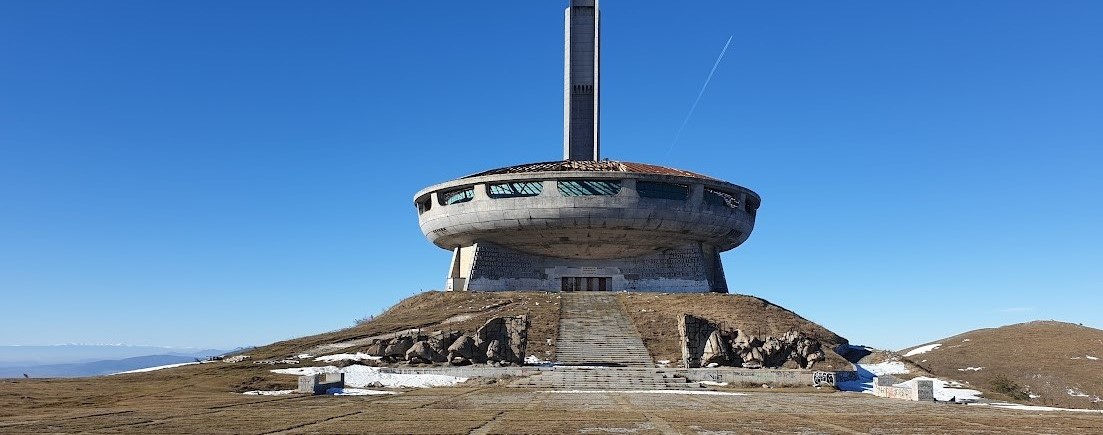I recently spent a week exploring Moldova, where I got to explore a lot of abandoned places. Abandoned places fascinate me for many reasons. Most notably because these places symbolize broken dreams. When starting any large construction project, people dream of how these places will improve their lives and the lives of others. I believe there are lessons to be learned by visiting these places and contemplating how they ended up the way they did.
In this post, I will try to tell Moldova’s tragic, hopeful story through 4 of the abandoned places I visited. But be careful, you might be inspired to go and visit the country yourself!
Soviet nuclear bunkers
During the Cold War Moldova was a part of the Soviet Union and it was located right on its western edge. This made Moldova an important place for the Soviets to build spy and military infrastructure. One such project was the nuclear bunkers in the north of Moldova.
The bunkers were intended to provide the Soviet Union with so-called ‘second-strike’ capabilities. This means that if nuclear war were to break out between the US and the USSR, the government of the USSR could take refuge inside these bunkers. From there they would be able to coordinate secondary strikes on their enemy. Numerous of these bunkers were built throughout the USSR, but thankfully none were ever used.
It is unclear when exactly construction began on these bunkers. For obvious reasons, the construction of these bunkers was carried out in utmost secrecy. The government referred to these bunkers as Object 1180. Object 1180 was never fully completed when the Soviet Union disintegrated.
To visit the bunkers I walked a mile from the main road to the bunkers through a dense forest. The bunkers appear out of nowhere. Then I understood why the Soviets chose this place for the bunkers, and how they were able to keep its construction a secret from the local population.
I believe these bunkers are a great example of how tiny Moldova has often been used by larger powers to accomplish their goals.

A school in Tiraspol
Soon after the fall of the Soviet Union, a civil war erupted in Moldova. On one side was Moldova with its capital Chișinău, and on the other side was Transnistria with its capital Tiraspol. The war lasted from 1990 until 1992, but the country is still divided to this day.
It was in Tiraspol where I visited an abandoned school. The school was abandoned in 1995 soon after the war due to a lack of students and funding.
The school seems to have been abandoned in a hurry as much of the educational material is still there. Among others, there is a chemistry room, a physics room, a biology room, and a doctor’s office.
There are reminders of the Cold War in the form of posters to educate children on what to do in case of a nuclear strike. There are reminders of the Civil War in the form of bullet holes in the windows and the walls of the school.
I think this school symbolizes the political turmoil that Moldova went through in the early 90s and how this affected regular people in their daily lives.

Hotel National
This giant hotel stands completely abandoned in the middle of Chișinău. I enjoyed visiting it, and the views from the roof are amazing. However, I cannot imagine what the locals must feel when they walk past this monstrosity every single day.
The hotel was built in 1974 as part of the Intourist hotel network in the USSR. Until the collapse of the Soviet Union, it thrived and boasted several bars, restaurants, and shops.
It is unclear when exactly the hotel was abandoned. It is known that the number of clients quickly declined after the Soviet Union collapsed and the subsequent Civil War in Moldova. The hotel was owned by the state until 2006 after which it was privatized. It has changed hands several times since then, but plans for renovation or demolition have never come to fruition.

The hotel stands as a testament to the mismanagement of the country since its independence. Many politicians have come to power in this country based on lofty promises only to do everything to line their own pockets. Powerful people in 2014 even managed to steal $1 billion. That is 12% of Moldova’s GDP.
In recent years graffiti artists have been trying to make the sight of the hotel more tolerable. In 2022 they painted the Ukrainian flag on the hotel in support of Ukraine after Russia’s invasion. More recently the Moldovan flag has been painted on the hotel. To me this shows that Moldova is resilient and ready for change.

Wine institute
Just outside of Chișinău stands on a hill overlooking a beautiful lake and Moldova’s countryside stands a tower. This tower was supposed to become Moldova’s wine institute, but it was never finished.
Not many people know that Moldova produces excellent wine. The largest wine cellar in the world is located in Moldova, the Milestii Mici Winery. Grapes are grown all over the country, and I even managed to snatch some in some of the public parks in Chișinău.

The top of the wine institute was supposed to become a tasting room with a 360-degree view of the surrounding area.
To me, the tower shows the huge potential of Moldova. Moldova is a beautiful country with a rich history and culture and very friendly and hospitable people. If only its politicians can get their act together Moldova could become a tourist hotspot rivalling the South of France.






Leave a Reply